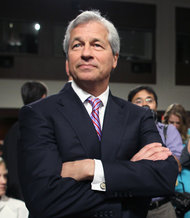The stock market rose on Thursday after positive data about the job market was released, with the Standard Poor’s 500-stock index and the Dow Jones industrial average snapping five-day losing streaks.
But the gains were limited as investors continued to worry whether Washington lawmakers would manage to avoid a government shutdown and a possible federal debt default.
Initial claims for unemployment benefits dropped last week near a six-year low, the Labor Department said, a development that could bode well for employers adding workers to their payrolls. The encouraging data on jobless claims comes just over a week before September’s employment report is due.
“If today’s number was a good number, that means when we see the job report on Oct. 4, that number ought to be pretty strong,” said Philip Orlando, chief equity market strategist at Federated Investors.
The Dow industrials rose 55.04 points, or 0.4 percent, to close at 15,328.30. The S. P. 500 gained 5.90 points, or 0.4 percent, to 1,698.67. The Nasdaq composite index picked up 26.33 points, or 0.70 percent, to 3,787.43.
Among notable gainers on the Nasdaq, Bed Bath Beyond rose $3.32, or 4.5 percent, to $77.54, a day after it reported a jump in its second-quarter profit.
After the closing bell, shares of Nike jumped $4.36, or 6.2 percent, to $74.70 after it reported a profit that exceeded analysts’ estimates. This was the first earnings report for the retailer as a member of the Dow. The stock ended the regular session up 2.1 percent at $70.34.
In the bond market, interest rates inched higher. The price of the Treasury’s 10-year note slipped 6/32, to 98 23/32, while its yield rose to 2.65 percent, from 2.63 percent late Wednesday.

Article source: http://www.nytimes.com/2013/09/27/business/daily-stock-market-activity.html?partner=rss&emc=rss

